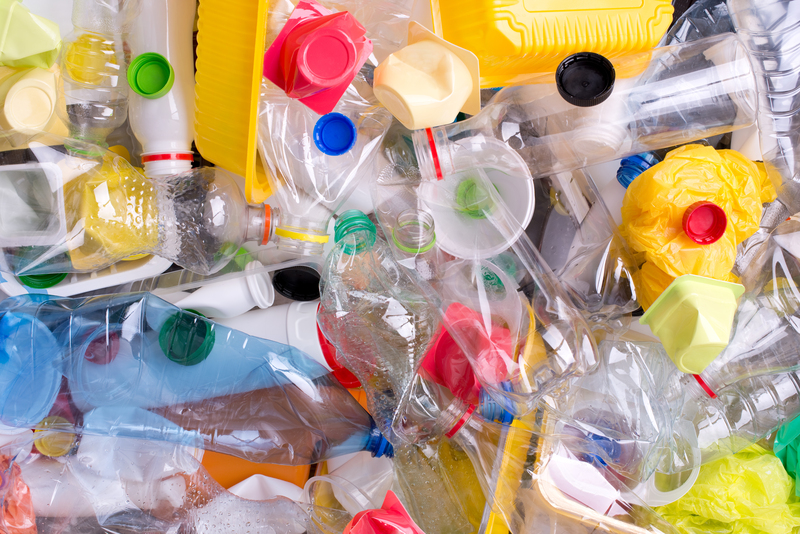How to Recycle Pots and Pans: Step-by-Step Guide
Have your old cookware reached the end of the line? Don't toss them in the trash! With sustainable living gaining ground, recycling pots and pans is more important than ever. This comprehensive guide covers everything you need to know--from understanding the types of cookware to creative upcycling options and how to properly recycle them. Read on to embrace greener kitchen practices!
Why Should You Recycle Pots and Pans?
Every year, millions of pots and pans are discarded, adding to metal waste in landfills. Since most modern cookware is made from metals such as aluminum, stainless steel, and copper, these items are highly recyclable. By recycling your old cookware, you help conserve natural resources, reduce landfill waste, and support the circular economy. Plus, some materials, like Teflon-coated pans, require special handling to avoid environmental harm.
Environmental Benefits
- Reduces the demand for raw materials.
- Minimizes landfill waste.
- Lowers greenhouse gas emissions from manufacturing new cookware.
- Protects wildlife from contaminated or discarded metals.

Understanding Cookware Materials and Recyclability
Not all pots and pans are created equal. Material type plays a crucial role in determining how cookware can be recycled. Let's dive into the common types of kitchen pots and pans and their recyclability.
Most Common Cookware Materials
- Stainless Steel: Highly recyclable, sturdy, and accepted by most scrap yards.
- Aluminum: Prized for its recyclability and lightweight properties.
- Copper: Valued by metal recyclers; often found in premium pans.
- Cast Iron: Heavy but easy to recycle or refurbish.
- Nonstick/Coated Pans (e.g., Teflon or ceramic): Require special processing.
*Always remove any plastic or non-metal parts (such as handles and lids) before recycling.*
Are Pots and Pans Curbside Recyclable?
Most city curbside recycling programs do not accept pots and pans due to their size, coatings, or mixed materials. While drink cans and tin food containers are typically accepted, cookware poses challenges for sorting machines.
So, don't put your old pots and pans in the blue bin unless your local program says you can!
Step-by-Step Guide: How to Recycle Pots and Pans
Here's a step-by-step process to ensure your cookware is recycled properly.
1. Assess Your Pots and Pans
- Usable Condition? If your cookware still works, consider donating or repurposing instead.
- Material Type? Identify if it's stainless steel, aluminum, copper, or non-stick coated.
- Mixed Materials? Remove plastic, wood, and glass components from the main metal body.
2. Contact Local Recycling Centers or Scrap Yards
Search for "scrap metal recycling near me". Most scrap yards accept metal pots and pans, even if they aren't in pristine shape.
- Call ahead to confirm they accept cookware and what preparation they require.
-
Many centers require you to:
- Separate metals (e.g., copper from steel).
- Remove non-metallic parts (handles, knobs, lids).
- Bring identification or proof of residence if required by the scrap yard.
3. Prepare Your Pots and Pans
- Clean off food residue and oils to prevent contamination.
- Disassemble the cookware (remove plastic or rubber handles and lids).
- Remove non-recyclable parts: Some parts, like composite handles or glass lids, should be disposed of separately.
- For non-stick pans: Scrape off or indicate if the cookware is coated, so the center can process it accordingly.
4. Drop-Off at Appropriate Facility
- Take your cookware to the nearest recycling center or scrap metal dealer.
- Some facilities may offer cash for valuable metals like copper or aluminum.
- Make sure to dispose of Teflon or ceramic-coated pans only at centers equipped to handle such materials.
5. Alternative: Manufacturer Take-Back Programs
- Some brands (e.g., Calphalon, Le Creuset) offer return or recycling programs for old cookware--check online or your product's packaging.
- Mail-in programs may require you to ship pans, so follow instructions on cleaning and packing.
What About Upcycling or Donating Old Cookware?
If your pans and pots are still safe to use (no deep scratches, rust, or peeling coatings), consider giving them new life:
Donation
- Donate gently used pots and pans to local charities, shelters, or thrift stores.
- Some food banks or community kitchens also accept cookware donations.
- *Call ahead to ensure they accept these items!*
Creative Upcycling Ideas
- Turn an old pot into a planter for herbs, flowers, or succulents.
- Use cast iron skillets as rustic garden decor or bird feeders.
- Transform frying pans into wall art, clocks, or storage trays.
- Repurpose saucepans as quirky organizers for tools or craft supplies.
Special Considerations: Nonstick and Ceramic-Coated Pans
Nonstick pans present unique challenges due to their Teflon or ceramic coatings. These coatings can't be processed in standard scrap metal recycling and may discharge toxic fumes if not handled properly.
- Contact manufacturers for mail-in recycling or disposal programs.
- *Never incinerate nonstick pans: Dangerous chemicals can be released!*
- Some specialized recycling facilities will accept these pans--search online or check with your municipal hazardous waste center.
How to Tell Which Pots and Pans Can Be Recycled
- Magnet test: If a magnet sticks, it's usually steel or iron (highly recyclable).
- Non-magnetic but metallic: Likely aluminum (also recyclable).
- Look for recycling codes or brand information indicating recyclable materials.
- Check for excessive coatings or multiple materials that might complicate recycling.
Frequently Asked Questions About Recycling Pots and Pans
-
Can I put pots and pans in the regular recycling bin?
No. Most curbside recycling programs won't accept them due to their size or coating. -
What if my pots and pans are rusty?
They can still be recycled--just remove non-metal parts. -
Are glass lids recyclable?
Most glass lids should be disposed of or checked with a recycling center--standard kitchen glass can differ from regular recyclables. -
Can I earn money for recycling pots and pans?
Yes, especially with copper and aluminum cookware, though the amount is generally nominal. -
What is the best way to dispose of non-stick pans?
Look for specialized recycling or mail-back programs offered by cookware manufacturers or your local waste authority.
Additional Eco-Friendly Disposal Tips
- Take advantage of community recycling events: Some towns organize e-waste or metal collection days.
- Check with hardware stores: Some may collect broken kitchenware for recycling.
- Promote zero waste: Try to repair or repurpose before recycling.

Summary: Make Recycling Pots and Pans Part of Your Green Routine
Recycling your old cookware is a small act that makes a big difference for the planet. By following the step-by-step guide outlined here, you can confidently choose the eco-friendliest route for your unwanted kitchen items:
- Identify and disassemble your cookware.
- Research local recycling options and specific guidelines.
- Upcycle or donate usable items for a second life.
- Dispose of non-recyclable parts responsibly.
Whether you're replacing a worn-out frying pan or decluttering your cabinets, remember: Pots and pans recycling helps reduce waste and support a sustainable future. Share these tips with friends and family to help spread eco-conscious habits!
Useful Resources for Recycling Kitchen Cookware
- Earth911 - Find local recycling centers: earth911.com
- Scrap Metal Recyclers Association - Directory of scrap metal recyclers near you.
- Calphalon Recycling Program - For brand-specific cookware recycling information.
- City/Municipal Waste Services - Visit your city's website for local guidelines.
Ready to recycle your old pots and pans? With this guide, you'll make eco-friendly decisions easier than ever. Make recycling a routine step in your kitchen upgrades and renovations!
```